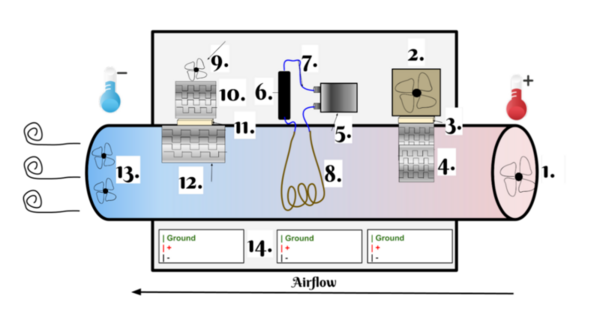Thermoelectric cooling in greenhouses: Implications for small-holder production
(1) Lynbrook High School, San Jose, California, (2) Soil and Crop Sciences Field, School of Integrative Plant Sciences, Cornell University, Ithaca, New York
https://doi.org/10.59720/22-055
Greenhouses protect plants year-round by creating controlled microclimates that rely on environmental control systems to regulate temperature, carbon dioxide, humidity, and other environmental factors. However, even with such systems in place, farmers and greenhouse operators face difficulties in managing humidity and temperature. The cost to buy, install, run, and maintain such systems is also a limiting factor for small-holder farmers who need to control their indoor growing spaces. Controlling humidity and temperature in a greenhouse is vital for plant growth as it limits pests and prevents the spread of fungal diseases and root rot. In this paper, we present the development and testing of the Dehumidification Device, a thermoelectric cooling and drying system developed from low-cost, market-available technology, designed to improve temperature and humidity management practices in greenhouse systems while increasing economic accessibility to such systems. To test the efficiency of the thermoelectric cooling system, the Dehumidification Device was placed in one of two identical greenhouses. The internal temperature and relative humidity in each greenhouse were recorded every 30 minutes during a 150-minute experimental period for seven days. The data revealed that the presence of the Dehumidification Device was statistically significant, improving temperature by 2.71°C and humidity by 14% during the 150-minute period. Thus, we were able to show the potential for thermoelectric cooling to support the greenhouse industry in managing humidity and help ease greenhouse management. The low-cost and accessible materials used to create the device illustrate the positive implications for assisting local, small-holder practices.
This article has been tagged with: